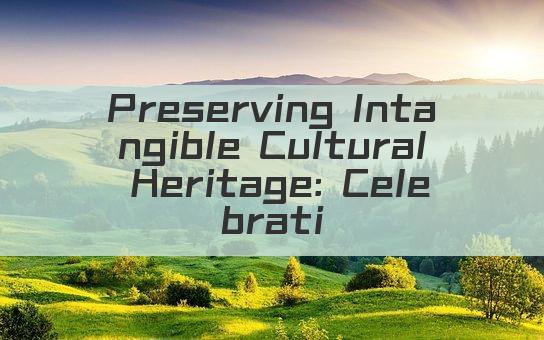Introduction to Intangible Cultural Heritage
Intangible cultural heritage refers to the practices, representations, expressions, knowledge, skills, and traditions that communities, groups, and individuals recognize as part of their cultural heritage. Unlike tangible heritage, such as buildings and artifacts, intangible heritage is not physical and is often passed down through generations through oral tradition, performance, and practice. It encompasses a wide range of cultural expressions, including folklore, traditional music, dance, rituals, and craftsmanship. In this article, we will explore the significance of intangible cultural heritage, its preservation, and some notable examples from around the world.
Significance of Intangible Cultural Heritage
Intangible cultural heritage plays a crucial role in shaping the identity and cultural diversity of societies. It reflects the values, beliefs, and practices of communities, contributing to their social cohesion and sense of belonging. Here are some key reasons why intangible cultural heritage is significant:
Preservation of Cultural Identity: Intangible heritage helps preserve the unique cultural identity of communities, ensuring that their traditions and practices are passed down to future generations.
Social Cohesion: Cultural practices and rituals often bring people together, fostering a sense of community and social cohesion.
Knowledge and Skills: Traditional knowledge and skills are an invaluable resource for communities, providing them with practical solutions to everyday challenges.
Artistic Inspiration: Intangible heritage serves as a source of inspiration for artists, musicians, and creators, contributing to the richness of cultural expressions.
Global Understanding: By recognizing and celebrating intangible cultural heritage, we promote global understanding and appreciation of diverse cultures.
Preservation of Intangible Cultural Heritage
Preservation of intangible cultural heritage is essential to ensure that these valuable traditions and practices are not lost over time. Here are some strategies used for the preservation of intangible cultural heritage:
Documentation: Recording and documenting intangible cultural heritage through audio, video, and written materials helps preserve the knowledge and practices for future generations.
Education and Training: Providing education and training programs to young people helps ensure that traditional knowledge and skills are passed down.
Community Involvement: Involving communities in the preservation process ensures that they take ownership of their cultural heritage and actively participate in its conservation.
Legislation and Policy: Governments and international organizations often enact laws and policies to protect and promote intangible cultural heritage.

International Cooperation: Collaboration between countries and organizations helps share best practices and resources for the preservation of intangible cultural heritage.
Notable Examples of Intangible Cultural Heritage
There are numerous examples of intangible cultural heritage from around the world. Here are a few notable ones:
Chinese Opera
Chinese opera, also known as Peking opera, is a traditional Chinese art form that combines music, dance, acrobatics, and drama. It has been recognized as a UNESCO Intangible Cultural Heritage in 2010 and is celebrated for its elaborate costumes, makeup, and performances.
Japanese Tea Ceremony
The Japanese tea ceremony, or Chado, is a traditional Japanese ritual that involves the preparation and serving of Japanese green tea. It is a form of spiritual and aesthetic discipline that emphasizes harmony, respect, purity, and tranquility.
Andean Music and Dance
Andean music and dance are integral to the cultural identity of the Andean people. The music, characterized by its rhythmic patterns and haunting melodies, is often accompanied by traditional dance, which tells stories and preserves the history of the Andean region.
Maasai Singing and Dances
The Maasai people of East Africa have a rich tradition of singing and dancing, which is an essential part of their culture. These performances often take place during ceremonies, such as weddings and initiations, and are a way to express their spirituality and social values.
Conclusion
Intangible cultural heritage is a vital component of our global cultural landscape, reflecting the diversity and richness of human experience. By recognizing, preserving, and celebrating these traditions, we honor the past and ensure a vibrant future for cultural expressions around the world.


发表评论
发表评论: